How to Grow Chrysanthemums – A Symbolic Flower
When I think of Autumn, I envision beautiful chrysanthemums. They dot the landscape with varying shades, from whites and yellows to deepest burgundies and purples. It is a reminder that cooler nights and days filled with brilliant blue skies scattered with puffs of white clouds are on the horizon.
There are many different varieties of “mums” and unless you know the difference, you may be disappointed when your colorful chrysanthemums do not make it until the next growing season. Read on to learn how to grow chrysanthemums, a symbolic flower.
(Some of the links within this post are affiliate links on which I receive a small compensation from the sale of certain items with no extra cost to you.)
(As an Amazon Associate I earn from qualifying purchases.)
The Perfect Chrysanthemum for Your Garden
When selecting a mum for your garden, make sure you purchase one from a nursery or a farm stand that is hardy. Many florist’s chrysanthemums are seasonal, meaning they will not survive a transplant to the outside. These mums have a limited root system and will most likely not survive a winter in your garden.
Mums will bloom from late summer through October. Select a mum with an abundant amount of closed buds so you can enjoy them throughout the fall season. Also, choose a mum that looks healthy with vibrant green leaves and is not wilted.
Nursery mums come in many varieties. Actually, there are 40 some wild species and thousands of varieties. They differ in size, color, shape of blossom, and number of flowers on each stem. Listed below are just a small selection of chrysanthemums.
Cushion Mums
– grow close to the ground with wide masses of blooms in a variety of colors
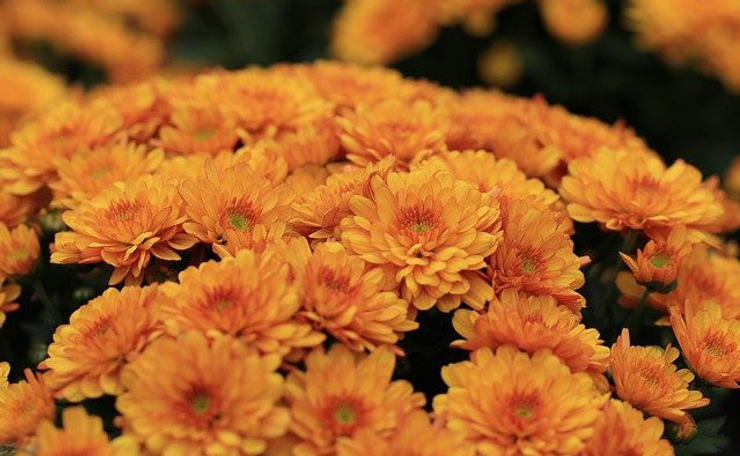
Brush or Thistle Type
– tubular petals that are fine and grow parallel to the stem; look like bristles of a paintbrush
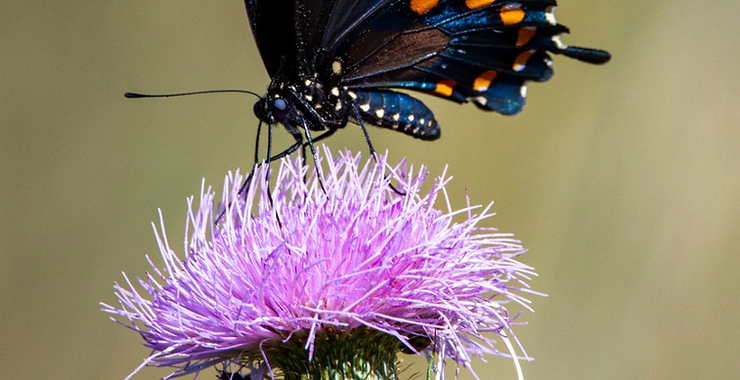
Single Blooms
– look similar to a daisy but their centers are a little larger than a daisy
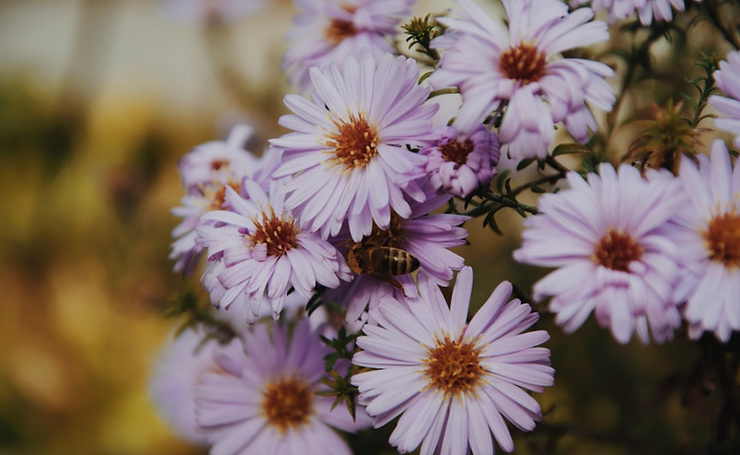
Quill Blooms
– spiky and quill-like
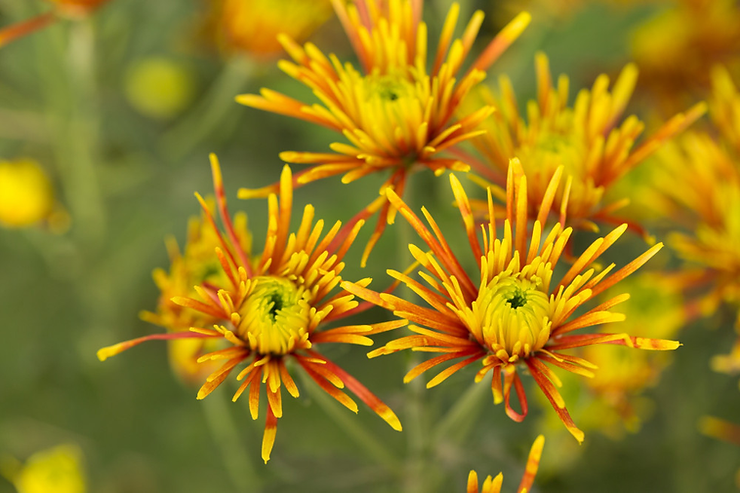
Spider Blooms
– spider-like legs that are long and thin
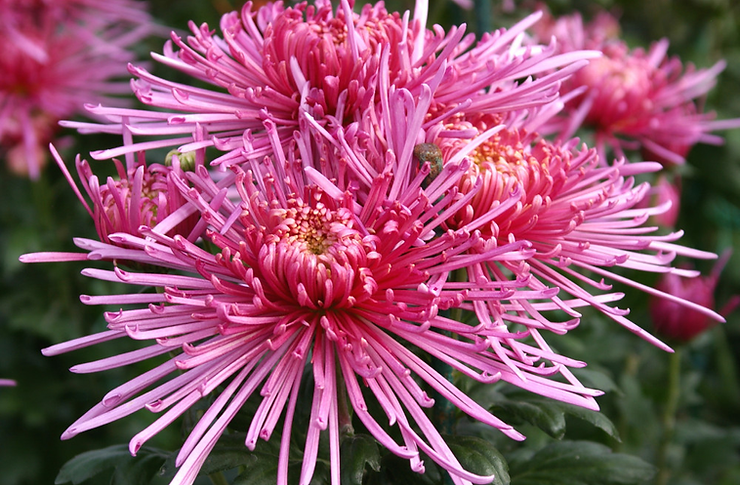
Anemone
– have a central disc with petals surrounding the disc
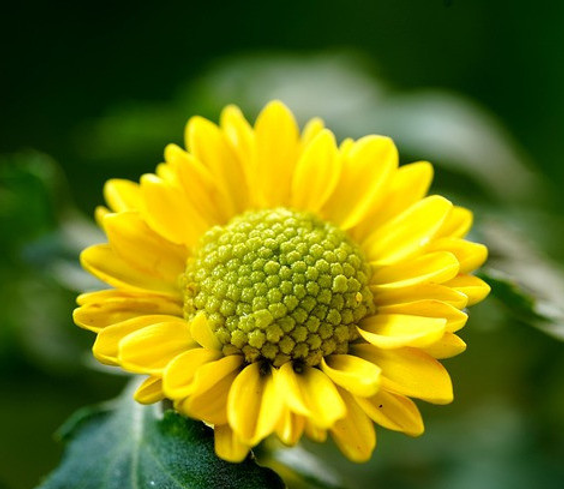
Pompons (not pompoms)
– globe shaped with petals that hide the center disc
There are 2 kinds of Pompons, reflex and incurve Blooms – they curve either inward or outward. Below is an incurve type of Pompon.
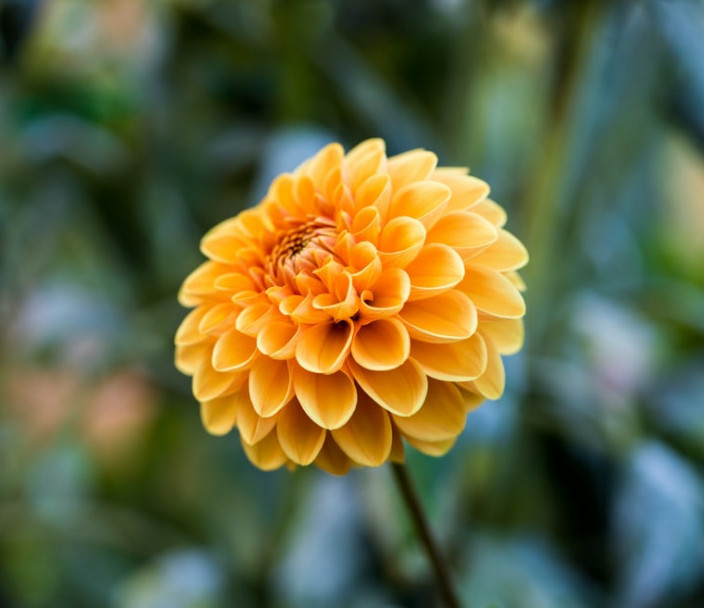
Below is a reflex mum which curves outward.
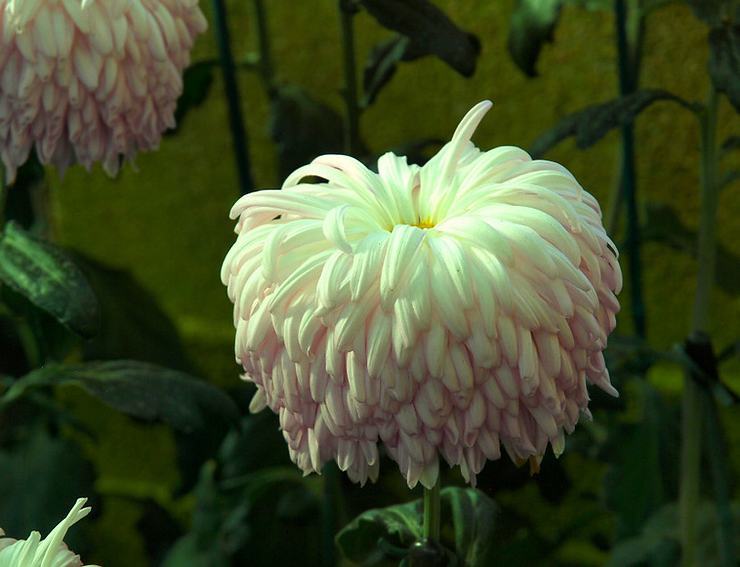
Again, make sure you purchase a hardy variety.
For more information on growing perennials, refer to my post Continuous Blooming Perennials.
How to Grow Chrysanthemums
After selecting your mum, you must consider a few things when deciding where to place the plant.
1. Mums like full sun to a slightly shaded area. The plants will become leggy (long and spindly) and produce weak stems if they do not get at least 4 hours of sunlight.
2. They also thrive in well-drained, organic soil. However, chrysanthemums are quite adaptable to any soil, so don’t fuss too much about the soil.
3. Chrysanthemums will stay healthy in a free flowing area. Make sure there is enough air circulation around your plant, but not prevailing winds! Choose a location that is somewhat protected from the wind.
General Tips for Growing Mums
1. Fertilize the plants in the spring to promote healthy growth.
2. Pinch new growth right above a leaf node throughout the summer and keep the stems to approximately 7 inches. Continue pinching until mid July. This will guarantee flowering in the Autumn.
2. Break off any dead stems at the end of the growing season.
3. Mulch around the base of the plant before winter.
Pests and Diseases of Chrysanthemums
Chrysanthemums can become infested with pests and can be prone to diseases. For more information on how to prevent diseases and what to do if your plants have succumbed to them, click Chrysanthemum Plants and Diseases.
Growing Chrysanthemums in Pots
If you have purchased chrysanthemums from a nursery either in the fall or spring, follow the instructions below to maintain a healthy looking mum.
-
Repot the plant into a slightly larger container (variety of pots found at Sunny Daze Decor) than the original pot. Put a stone on top of the drainage hole in the bottom of the pot to limit the amount of soil lost in watering. Do not leave it in its original plastic container.
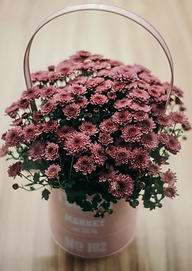
-
Choose a good organic potting mix such as Espoma AP8 8-Quart Organic Potting Mix found on Amazon.
-
Place a couple of inches of organic potting mix into the container.
-
Gently remove the plant from its original container. Be very careful. Chrysanthemum stems are very fragile and snap easily. Rather than throwing out the stems that have snapped off, either put them in a vase to be enjoyed inside or use them as cuttings to create new plants.
-
Once the plant is removed, gently unravel the roots on the outside and bottom of the root ball.
-
Place the plant into the new container and add extra potting mix to cover the sides of the ball. The root ball should be about a half an inch below the rim of the container.
-
Gently press down the excess mix.
-
At the first watering, set the pot in a dish containing around 2 inches of water for a few hours rather than watering from above. This will allow all the roots to soak up the water. Remove the pot from the dish after a few hours.
-
At the next watering, water from the top of the container, but not on the stems and leaves, either every day if it is hot or every other day. Actually, the mum will tell you when it is overdue for a drink. If when you lift the pot it is very light, water it thoroughly. Also, if the plant wilts, it must be watered immediately.
-
Do not wait for the mum to tell you it’s thirsty. Be pro-active and water it regularly to preserve the roots, buds and blossoms.
How to Propagate Chrysanthemums
There are 3 ways to propagate chrysanthemums, through division, seeds, or cuttings.
Division
If you have mums already growing in your garden, you can use the division method to propagate new plants. This is usually done in the spring after the shoots are about 3 to 4 inches long.
After 3 or 4 years in your garden, mums tend to get hollow in the center and leggy. Rectify this by digging out the entire ball of the plant with a spade shovel.
With a sharp knife, cut the ball into 3 or 4 sections. Then plant each section allowing for the correct sunlight and spacing for the plant to grow. Also, amend the soil with an organic substance to naturally fertilize the plant.
Keep your container in full sun and water regularly as directed above.
Seeds
You can start mums with store bought seeds. (Seeds Now) However, it takes a rather long time for the seeds to take hold and create a good sized plant to be transplanted.
If you choose to propagate through seeds, start sowing in the early spring 6 to 8 weeks before the last frost date.

Place seeds in seed starting mix. Use one to 2 seeds per small container. Keep moist and in morning sun. After the seeds have sprouted to about 6 to 8 inches, transplant them into either a container or the ground after the last freeze.
You can also sow seeds in late spring outside into prepared soil and after the last frost. Cover them with a thin layer of mulch and keep them evenly moist. Once grown to 6 to 8 inches tall, transplant them.
Cuttings
This is the quickest way to propagate new growth and create quick blooming plants. With sharp scissors, cut off the top 2 to 3 inches of new growth on a plant and place it into peat moss or perlite. Keep it moist but not soggy and in sunlight for at least 4 hours. The stem will root within a couple of weeks.
Pinch off the top of the stems above where leaves meet (the node) to promote lateral and full growth. Transplant once the plant is a substantial size.
The Symbolic Chrysanthemum
You see chrysanthemums everywhere, from get well bouquets to farewell bouquets at funerals. Generally though, mums when given as gifts symbolize happiness and good health.
Throughout the centuries chrysanthemums have garnered other connotations in various regions and countries.
Japan
In Japan, the chrysanthemum was introduced to their culture in the 5th century from China. The Japanese imperial family so loved the flower that they used it on royal seals and even on the throne. It still represents the Imperial Throne to this day.
September 9 is Japan’s National Chrysanthemum Day. This tradition began in 910 AD when the first chrysanthemum show was held.
China
The Chinese regard the mum as a symbol of longevity because of its health-giving properties. The tradition of sending chrysanthemums to funerals stems from the Chinese practice of wearing the flower on their clothing at funerals.
Chrysanthemums also represent the symbol of Autumn and the ninth moon. It is significant during the Double Ninth Festival in China.
Asia
The mums represent life and rebirth and are often given at birthdays and baby showers.
If you are given white chrysanthemums, thank the Asians. They feel these flowers symbolize loyalty and devoted love.
The Netherlands
Mums represent the autumn, as they do here in the US. So the giving of chrysanthemums in the fall is an excellent gift.
Since the chrysanthemum represents fidelity, the Dutch believe it is a perfect gift for a 13th wedding anniversary. Traditionally, the number 13 is bad luck. However, since the mum is associated with abundance and loveliness, it is considered the perfect gift to counter-balance the 13 in the 13th wedding anniversary.
France, Italy, Belgium, Austria
In these countries, the chrysanthemum is associated with death. Therefore, they only give mums as a token of bereavement, grief, and comfort.
France and Germany
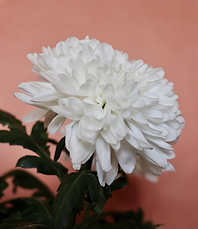
The French consider the white chrysanthemum to have another symbolic meaning. Both France and Germany associate the white mum with immortality (which kind of explains why it is used for deaths in France).
So as you can see, the chrysanthemum has cultural significance in many different regions and countries.
Random Health Benefits
Chrysanthemums have been shown to have improved some of the following conditions in the Chinese culture. They are also used for some of these conditions in other countries.
-
Angina (chest pain)
-
High Blood Pressure
-
Hyperthyroidism
-
Fever
-
Cold
-
Headaches
-
Type 2 Diabetes
-
Boosting the immune system
-
Strengthening bones
-
Calming jittery nerves
However, the use of chrysanthemums in tea or any other form has not been scientifically proven to correct any of these ailments. Always consult your physician before trying alternatives to your regular medications.
The chrysanthemum flower, when infused in hot water, is purported to produce a delicious beverage. It is packed with antioxidants, amino acids, minerals, vitamins and other organic compounds.
I have never tried brewing chrysanthemum flowers, but I plan on giving it a try. It may beat the flavor of tea! For more information on chrysanthemum tea, click here.
Growing Chrysanthemums
After reading this article I hope you learned something about chrysanthemums. Not only can you propagate them from your existing plants with ease, you can brew the flowers for a delicious and refreshing drink!
If you like this post, please leave a comment below and share it with others. I’d love to hear from you!
Happy Gardening!
Nina


